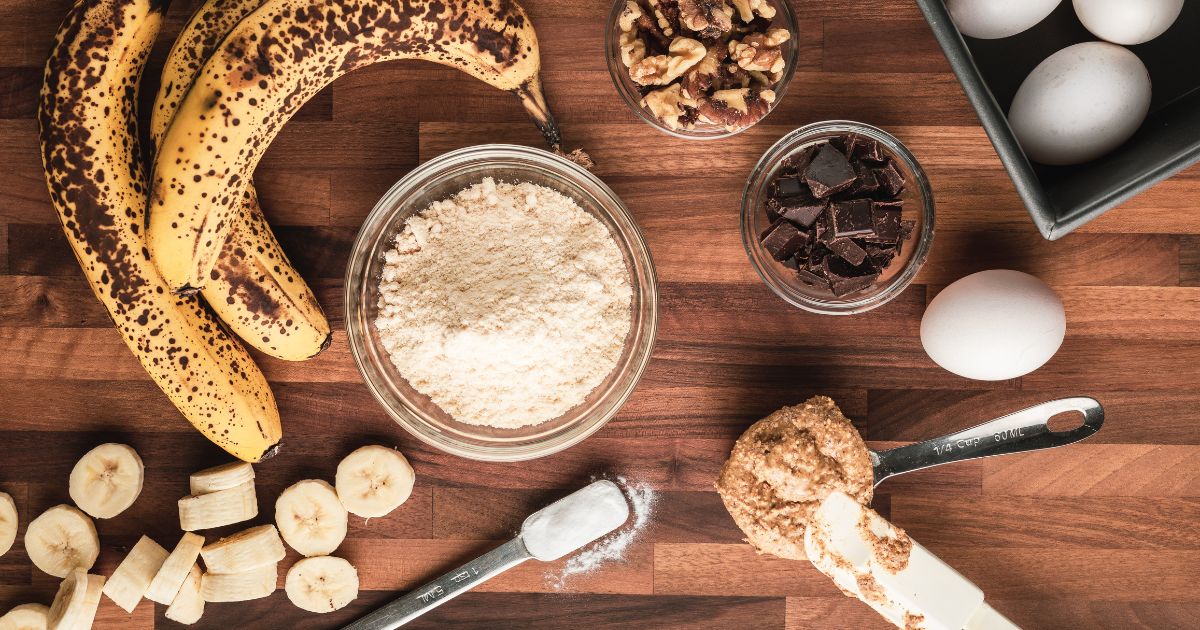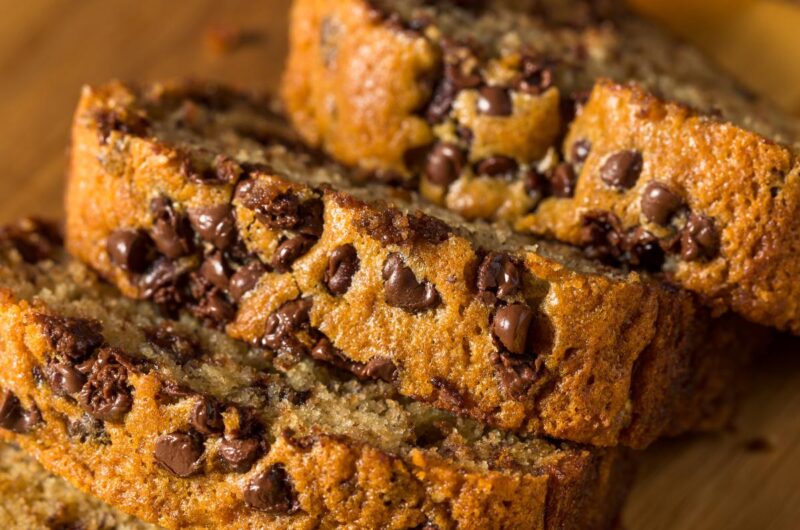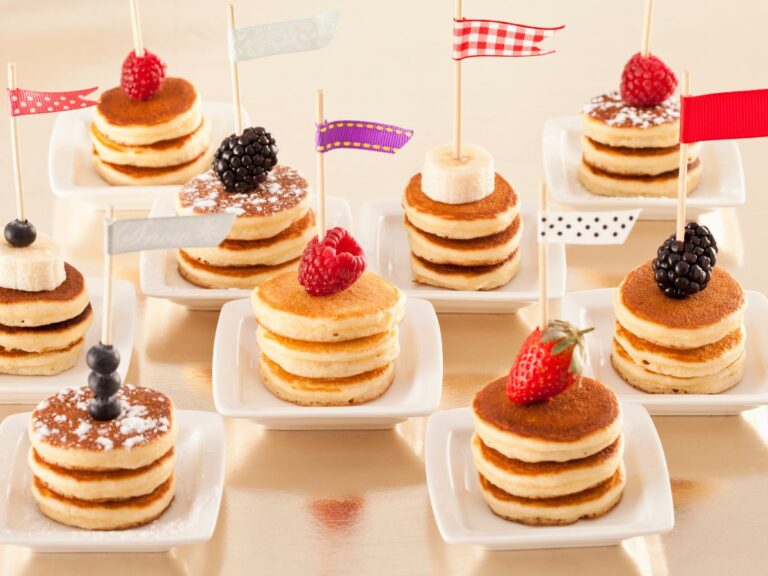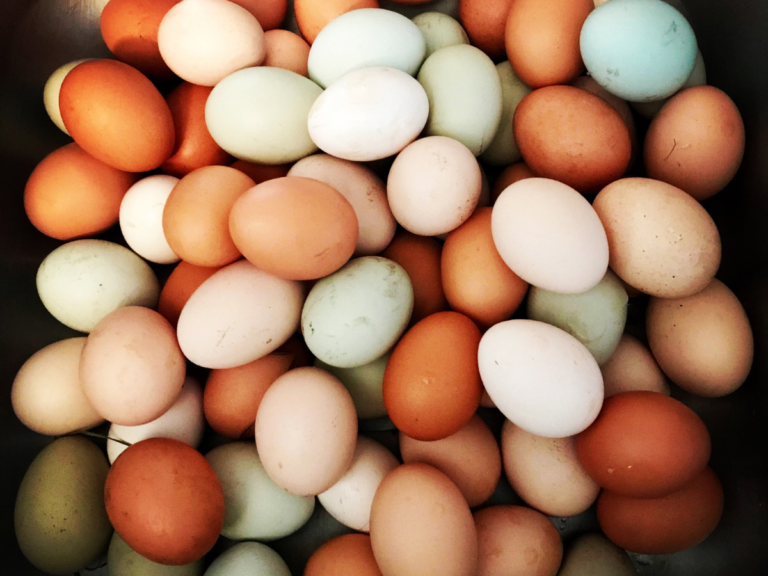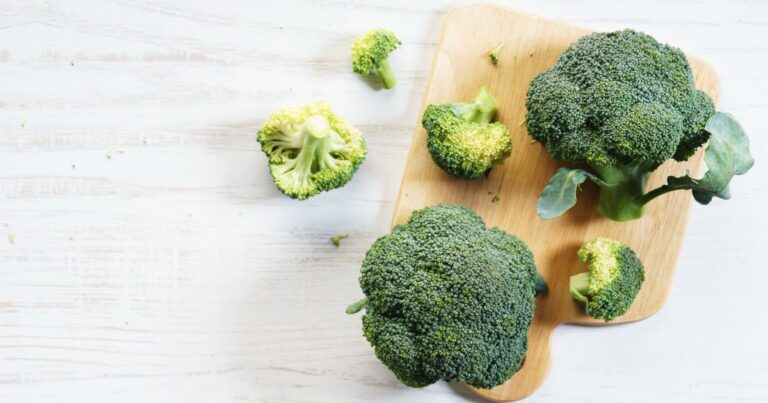Eggless Banana Bread Recipe: Best Egg Substitute For Banana Bread
Whatever the reason, you have decided to make banana bread without eggs today, and I’m all for it. I’m not here to judge; You could have run out of eggs or recently become vegan-obsessed. However, you may have stumbled here, so don’t worry a bit. I will guide you and ensure we find you the perfect egg substitute for banana bread.
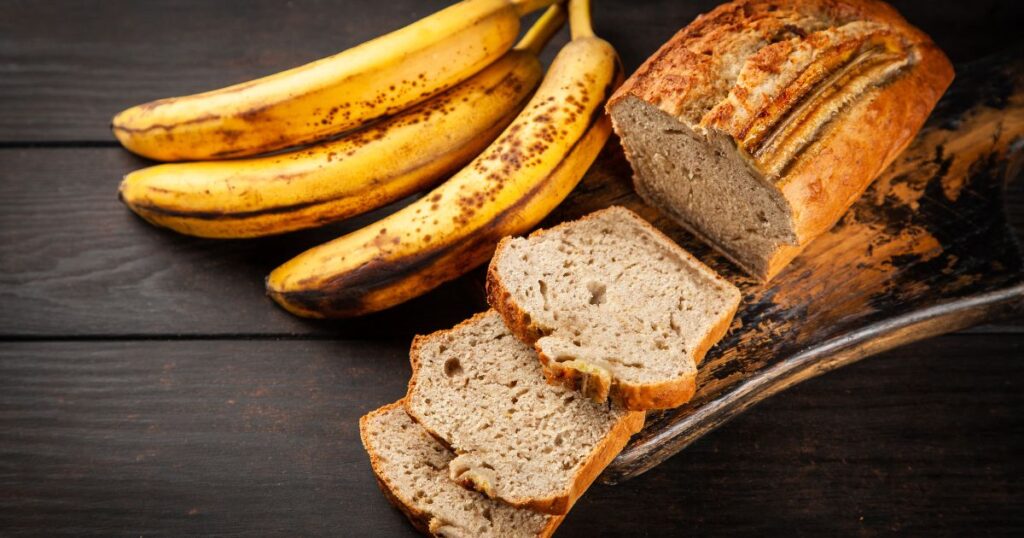
Top 7 Egg Substitutes for Perfect Banana Bread Every Time
I’m here to talk about a subject close to my heart (and my stomach): the art of baking banana bread. For today, we will learn how to do it without eggs.
The perfect egg substitute for banana bread is a few steps away, so hold on to your mashed bananas, and let’s break down a delicious vegan banana bread recipe.
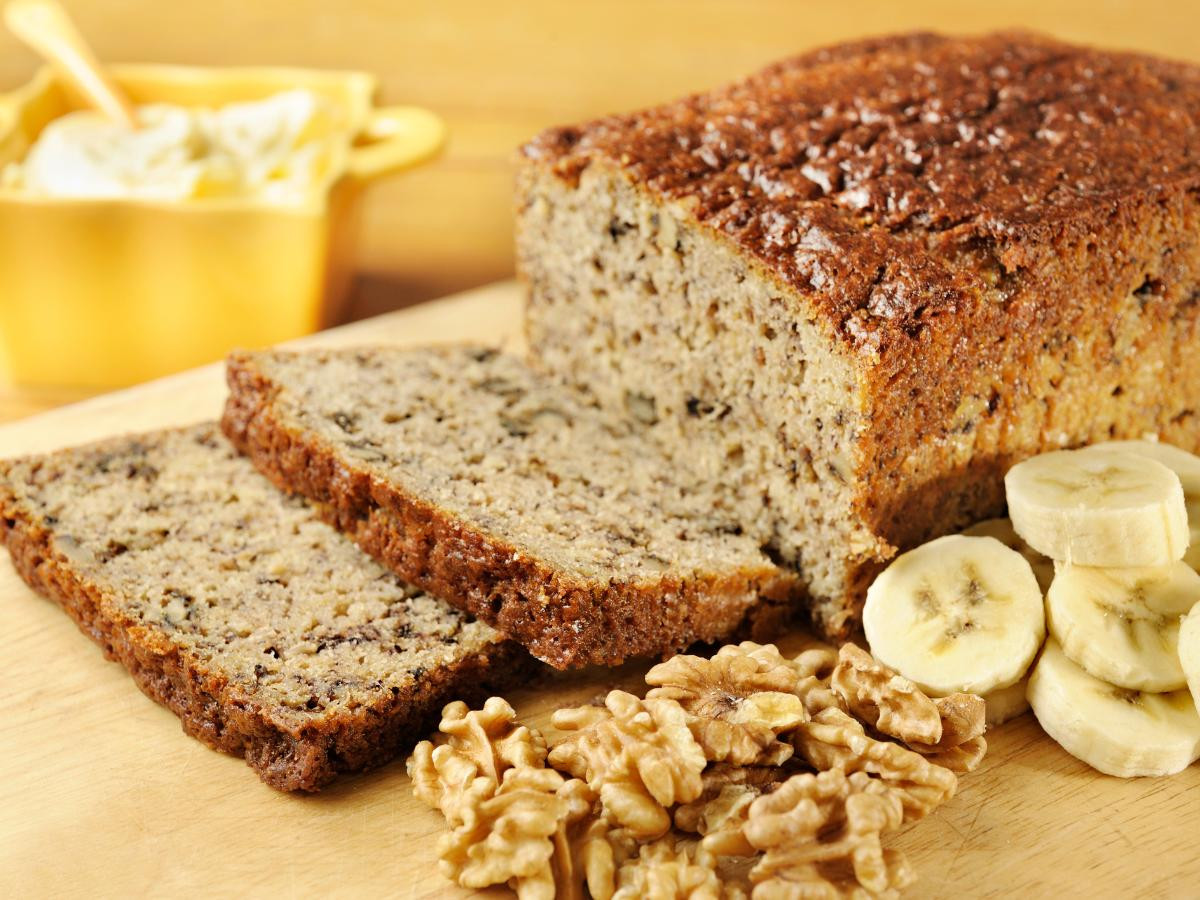
You might wonder, “Why would I ditch eggs in my delicious banana bread?”
Maybe you’ve run out of eggs, are ready to explore new options of creativity, have embraced a vegan lifestyle, or are baking for a friend with an egg allergy.
Whatever the reason, I’ve been there, and let me tell you, it’s not the end of the world.
Substituting eggs in banana bread isn’t just easy; it’s a chance to add unique flavors and textures to your favorite loaf.
And who knows? You and your electric stand mixer might stumble upon an eggless banana bread recipe combination that beats the classic recipe, hands down.
Table of Contents
Why Substitute Eggs in Banana Bread?

Eggs add structure, moisture, and richness to your banana bread batter. We’re not here to let eggs take all the glory.
Plenty of other ingredients are ready to replace eggs and step up to the plate (or the mixing bowl, in this case).
Structure
Eggs are structural powerhouses. When you beat them, they trap air and become fluffy, which helps the bread rise.
They also provide firmness, ensuring your banana bread doesn’t just taste good but also holds its shape and doesn’t crumble away like a sandcastle at high tide.
Moisture
Eggs are like little hydration packets. They help retain moisture, ensuring that your banana bread recipe doesn’t turn out dry.
Nobody likes dry banana bread. It’s like expecting a soft pillow and getting a brick instead.
Richness and Flavor
Eggs contribute a subtle richness that balances the sweetness of the bananas and sugar. They’re like the bass player in a rock band – not always noticed but crucial to the overall harmony.
Leavening Agent
This is a fancy way of saying eggs help your banana bread puff up and become light and airy.
Combined with leaveners like baking soda or baking powder, they give that delightful, spongy texture we all love.
Binding
Eggs are natural glue in baking. They hold everything together, ensuring the flour, bananas, and other ingredients form a unified banana bread batter.
But what if you can’t use eggs or don’t want to? The reasons are as varied as the substitutes available:
Dietary Restrictions: Vegans avoid eggs due to animal welfare concerns.
Health Concerns: Some folks might be allergic to eggs or are watching their cholesterol levels.
Availability: Have you ever been in the middle of baking and realized you’re out of eggs? Happens to the best of us.
Culinary Creativity: Sometimes, you want to experiment and try something new, perhaps aiming for a different texture or flavor profile.
So, when eggs are out of the picture, We turn to our pantry, where many egg substitutes await their moment in the spotlight.
These substitutes mimic the functions of eggs and can also add their unique twists, turning your standard banana bread into an unexpectedly delightful vegan banana bread recipe.
What Happens if You Bake Without Eggs?
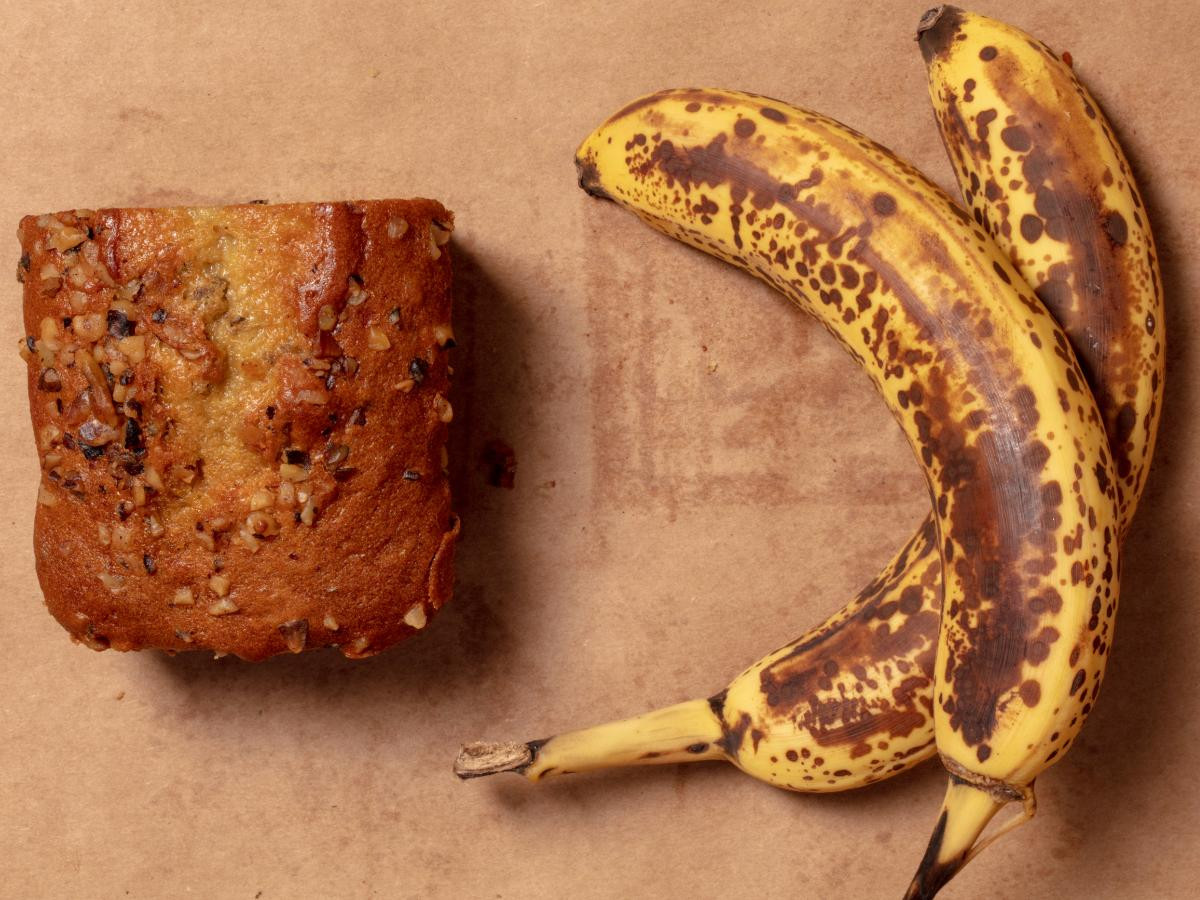
Baking without eggs can change the final product, depending on the type of baked good and the role eggs were meant to play in the original recipe. Here’s what can happen and why:
1. Less Structure
Eggs provide structure to baked goods. Without them, cakes, muffins, and bread might be flatter or crumble more easily.
2. Reduced Moisture
Eggs add moisture to the batter or dough. Some baked items might turn out drier without eggs unless another moist ingredient is added to compensate.
3. Altered Texture
The texture can be significantly different. For instance, cakes might be more fluffy, and cookies might have a different chewiness or be harder.
4. Decreased Leavening
Eggs act as a leavening agent, helping baked goods rise. With them, baked products might rise more, leading to denser results.
5. Binding Challenges
Eggs also bind ingredients together. With them, ingredients might mix uniformly, resulting in a more crumbly or less cohesive product.
6. Flavor Changes
While eggs do not usually dominate the flavor profile, they contribute a richness that can be missing in eggless recipes.
Mitigating These Effects:
Use Substitutes: Various substitutes can mimic the properties of eggs, such as mashed bananas, applesauce, ground flax seeds, chia seeds, yogurt, apple cider vinegar, sweetened condensed milk, buttermilk, silken tofu, and commercial egg replacers. Each substitute can address one or more of the eggs’ roles (moisture, binding, leavening, etc.).
Recipe Adjustments: Sometimes, it’s necessary to adjust other ingredients (like increasing baking powder or baking soda for leavening) or modify the baking time and temperature.
Specific Recipes: Some recipes are more forgiving of the absence of eggs than others. For example, dense, moist cakes like banana bread can fare better without eggs than delicate sponge cakes.
To Summarize: While eggs play multiple roles in baking, there are many ways to adapt recipes to be beautiful vegan banana bread recipes.
The key is understanding the function of eggs in your specific recipe and choosing the right substitute to achieve a similar outcome.
Eggless baking can still yield delicious, satisfying results with experimentation and adjustment.
What Can I Substitute For an Egg in Banana Bread?

Whether you’re looking for a health-conscious option, catering to dietary restrictions, or simply out of eggs, there’s always a way to keep that banana bread dream alive.
The key is experimenting and finding the best one that suits your taste buds and baking style.
7 Best Egg Substitutes for Banana Bread
Each alternative compensates for the banana bread without eggs and brings its unique twist to your beloved loaf. Let’s unravel these options individually, looking at how to use them and what they bring to the (baking) table.
1. Applesauce
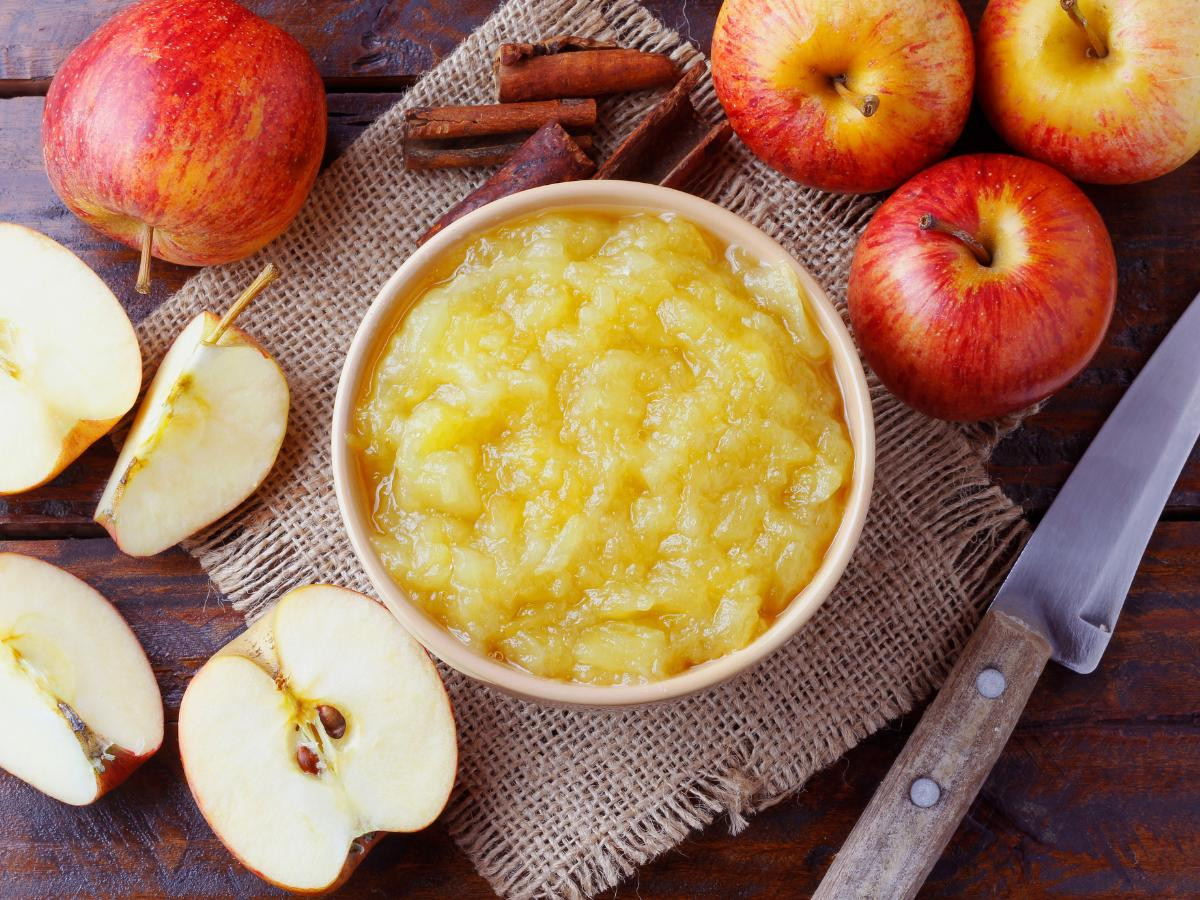
A personal favorite. It adds moisture without overpowering the banana flavor. Use 1/4 cup of unsweetened applesauce to replace one egg.
How to Use: 1/4 cup per egg.
Outcome: Moist bread, subtle sweetness.
Pros: Low fat, natural sweetness.
Cons: Can make bread dense if overused.
2. Mashed Bananas

More bananas? Yes, please! An extra 1/4 cup of mashed banana can make your bread even moister and banana-her (that’s a word now).
How to Use: Additional 1/4 cup per egg.
Outcome: Enhanced banana flavor and extra moisture.
Pros: Complements banana bread flavor.
Cons: This can result in a heavier texture.
3. Yogurt or Buttermilk
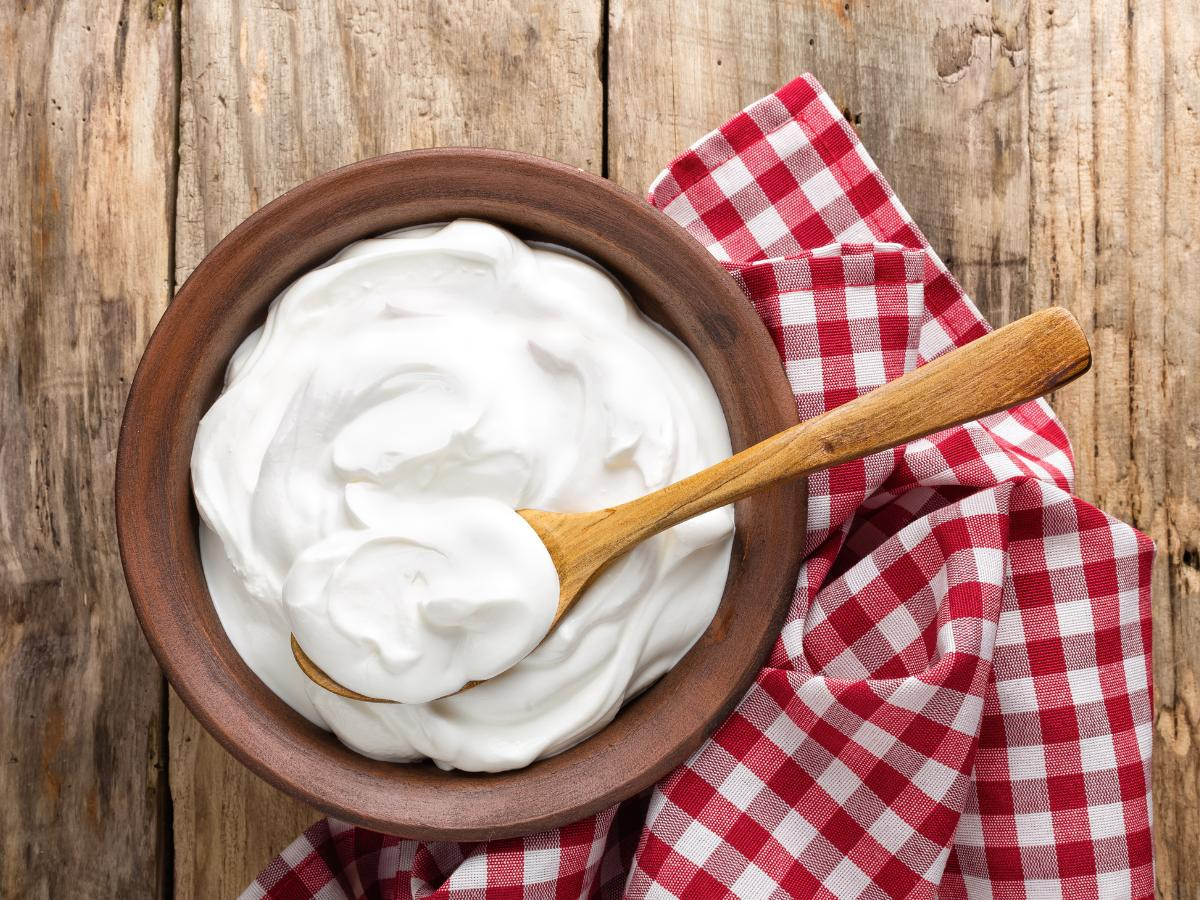
These add a lovely tang and richness. Use 1/4 cup to replace one egg. Bonus tip: Greek yogurt makes it even creamier.
How to Use: 1/4 cup per egg.
Outcome: Creamy texture, slight tanginess.
Pros: Richer bread texture.
Cons: Slight flavor alteration.
4. Flaxseed or Chia Seeds
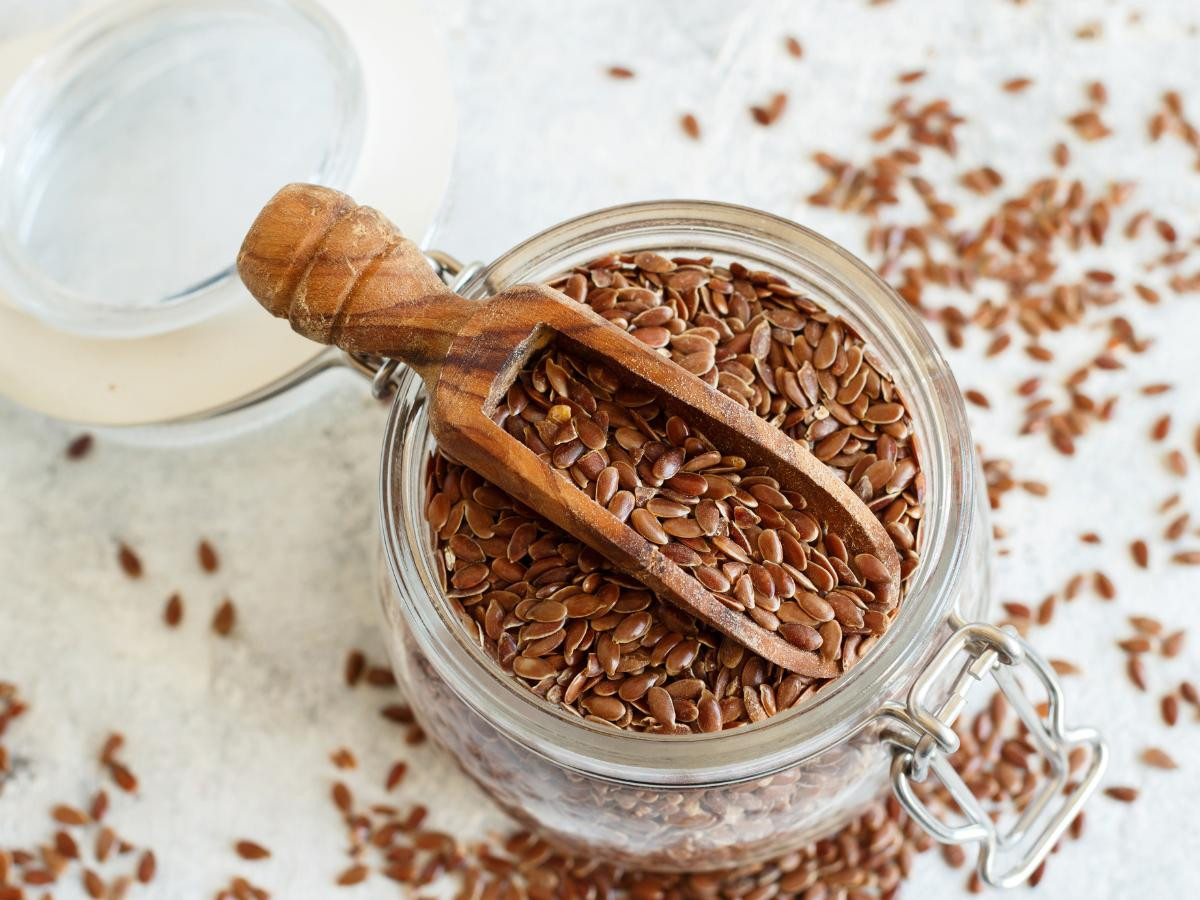
Welcome to the world of vegan egg substitutes! Mix one tablespoon of ground flaxseed or chia seeds with three tablespoons of water, let it sit, and voilà – a gelatinous mix that binds like an egg.
Use 1 tbsp ground seeds + 3 tbsp water, let sit.
Outcome: Nutty flavor, good binding.
Pros: Rich in omega-3 and fiber.
Cons: Grainy texture and nutty flavor might only suit some.
5. Commercial Egg Replacers
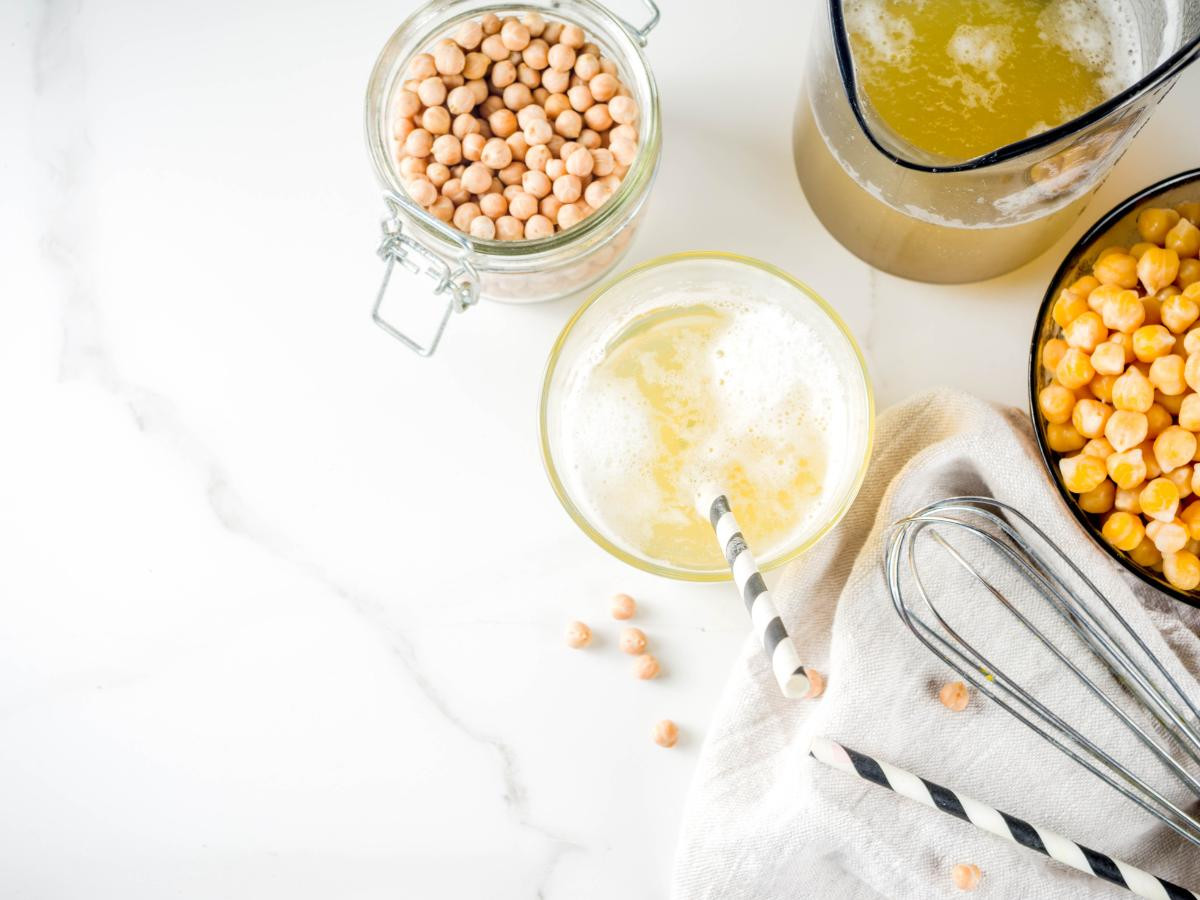
These are great in a pinch and available in most health food stores. Could you follow the package instructions?
How to Use: The package instructions are included below.
Outcome: Varies by brand, generally egg-like.
Pros: Convenient, consistent.
Cons: Possible additives, artificial taste.
6. Silken Tofu
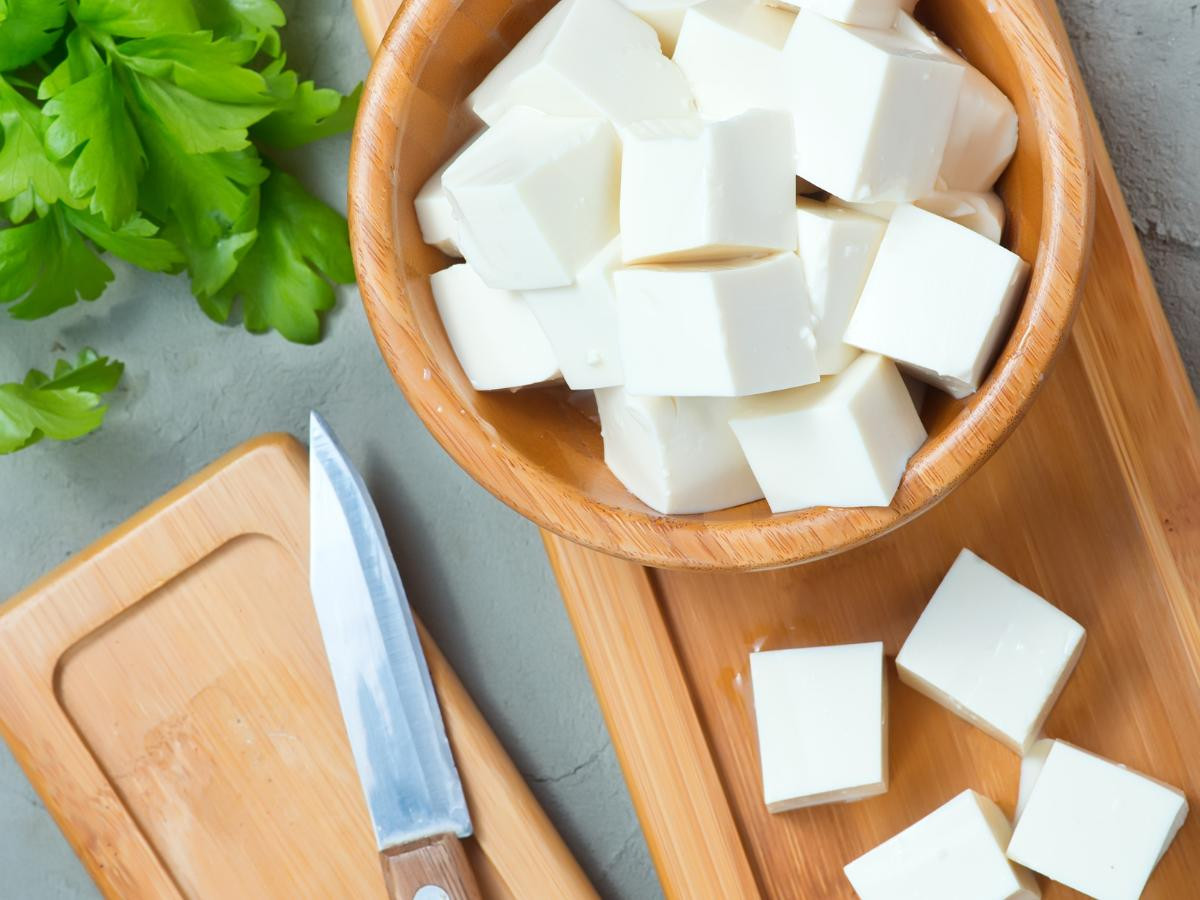
Blend it until smooth, and use 1/4 cup to replace one egg. It makes your bread unbelievably soft.
How to Use: Puree 1/4 cup per egg.
Outcome: Very soft, moist texture.
Pros: Adds protein and rich texture.
Cons: Slight tofu flavor, can make bread denser.
7. Vinegar and Baking Soda
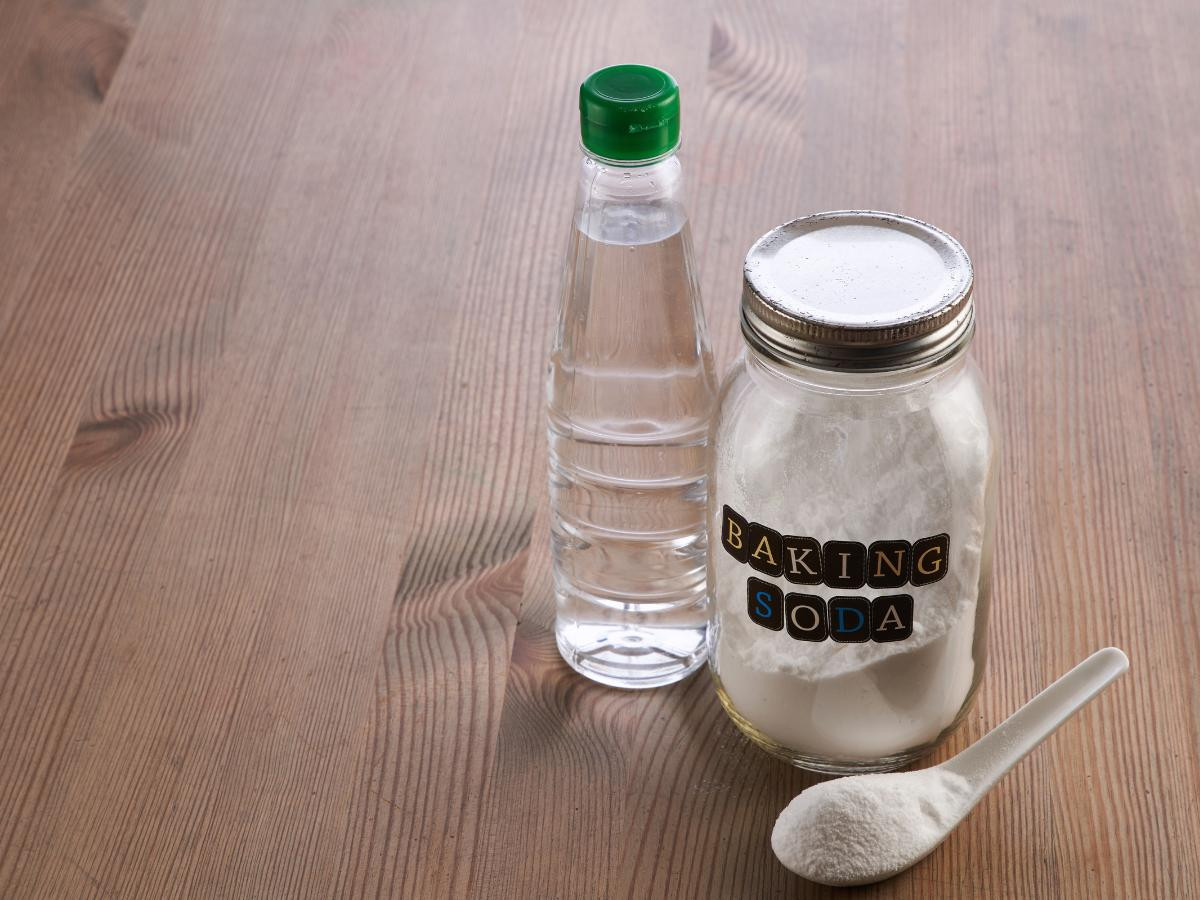
A classic. Use one tablespoon of vinegar (apple cider or white) mixed with one teaspoon of baking soda to replace one egg. It’s like a mini science experiment in your kitchen.
How to Use: 1 tbsp vinegar + 1 tsp baking soda per egg.
Outcome: Light, airy texture.
Pros: Good for allergies, adds fluffiness.
Cons: Possible vinegar aftertaste; mix last minute for effectiveness.
Baking Tips for the Perfect Egg-Free Loaf
Adjust Your Expectations: Each substitute adds its flair. Embrace the variety!
Avoid Overmixing: This can make your bread tough. Just mix until the ingredients are combined.
Check for Doneness: Egg-free breads might need more or less time in the oven. Trust the toothpick test.
The Ultimate Flexible Banana Bread Recipe
You can tweak a basic banana bread recipe with the above substitutes. Feel free to throw in nuts, chocolate chips, or whatever tickles your fancy!
Easy Eggless Banana Bread
Course: DessertDifficulty: Easy, Medium12
servings15
minutes1
hour600
kcalIngredients
1 cup mashed bananas (about three medium bananas)
1/3 cup melted butter or oil
1/4 cup sugar (adjust to taste)
1 1/2 cups all-purpose flour
One teaspoon of baking soda
A pinch of salt
Your choice of egg substitute (equivalent to one egg)
Optional: chocolate chips, nuts, dried fruit, etc.
Directions
Preheat your oven to 350°F (175°C). Grease a 9×5-inch loaf pan.
In a large bowl, mix the mashed bananas with the melted butter. Stir in the sugar and your chosen egg substitute.
Sift in the flour, baking soda, and salt. Fold gently until just combined.
Stir in any additional mix-ins (chocolate chips are my go-to).
Pour the batter into the prepared loaf pan and smooth the top.
Bake for 50-60 minutes, or until a toothpick inserted into the center comes clean.
Let it cool in the pan for a few minutes, then transfer to a wire rack to cool completely.
And there you have it! A versatile, foolproof banana bread recipe that caters to all your egg-free needs. Who said you need eggs to bake a scrumptious loaf? Not this chef!
Happy baking, and remember to share your creations and experiments. A whole world of flavors is waiting for you to explore in your egg-free baking adventures!
FAQ and Additional Information:
Can I make this banana bread recipe oil-free?

Yes, you can undoubtedly make the banana bread recipe oil-free.
Oil in recipes typically adds moisture and helps create a soft texture. To make an oil-free banana bread, you must substitute the oil with another ingredient that can provide moisture without adding fat.
Here are a few options:
Unsweetened Applesauce: This is a popular choice for oil replacement. It adds moisture and a slight sweetness without the fat. Use an equal amount of applesauce to replace the oil.
Mashed Bananas: Since you’re already making banana bread, adding extra mashed bananas can increase the moisture content. Use an additional 1/4 to 1/3 cup of mashed bananas instead of the oil.
Yogurt: Plain or Greek yogurt can be a good substitute for oil. It will add moisture and a bit of tanginess. Use an equal amount of yogurt to replace the oil.
Pumpkin Puree: Like applesauce, pumpkin puree can add moisture without fat. It works well in baked goods and adds a subtle flavor. Use an equal amount of pumpkin puree in place of the oil.
Silken Tofu: Pureed silken tofu can add moisture and create a dense, fudgy texture in the banana bread. Use an equal amount of pureed tofu to replace the oil.
Remember, substituting oil with these alternatives may slightly alter the texture and taste of your banana bread.
Experimenting with small batches to find the best substitute for your eggless banana bread recipe and taste preference is always a good idea.
How to ripen unripe bananas- FAST!

Ripening unripe bananas quickly is a common need, especially when you’re eager to make something like banana bread. Here are several methods to speed up the ripening process:
1. Paper Bag Method
How It Works: Place the bananas in a paper bag and loosely close it. The ethylene gas produced by the bananas will be trapped inside the bag, speeding up the ripening process.
Timeframe: 1-2 days.
2. Adding an Apple or Tomato
How It Works: Add an apple or a tomato to the paper bag with the bananas. Apples and tomatoes also release ethylene gas, accelerating the bananas’ ripening.
Timeframe: 1-2 days.
3. Oven Method
How It Works: Place the unripe bananas on a baking sheet and preheat them in an oven to 300°F (150°C). The heat will soften and sweeten the bananas.
Timeframe: 15-30 minutes. Keep an eye on them, as the time may vary depending on the banana’s ripeness.
Note: This method softens and sweetens the bananas but doesn’t exactly replicate natural ripening.
4. Microwave Method
How It Works: Poke the unpeeled bananas with a fork, then microwave them for 30-second intervals until they reach the desired softness.
Timeframe: 1-2 minutes total. Check after each interval to avoid overcooking.
Note: Like the oven method, this softens the bananas but doesn’t replicate natural ripening and flavor development.
5. Warm Place
How It Works: Place the bananas in a warm spot in your kitchen, near a sunny window, or on top of a refrigerator. The warmth speeds up the ripening process.
Timeframe: A few days, depending on the bananas’ warmth and initial ripeness.
Tips for Best Results:
Check Regularly: Especially with the oven and microwave methods, keep a close eye on the bananas to avoid over-ripening or burning.
Use Ripe Bananas for Best Flavor: These methods are great for softening bananas quickly, but naturally ripened bananas typically have the best flavor for baking.
Ethylene Producers: If you frequently need ripe bananas, consider storing them near other ethylene-producing fruits like apples, which will speed up the process over a few days.
These methods can help you ripen bananas quickly when you’re in a pinch and need them for baking or any other purpose where softer, sweeter bananas are desired.
How do you replace one egg with a banana?
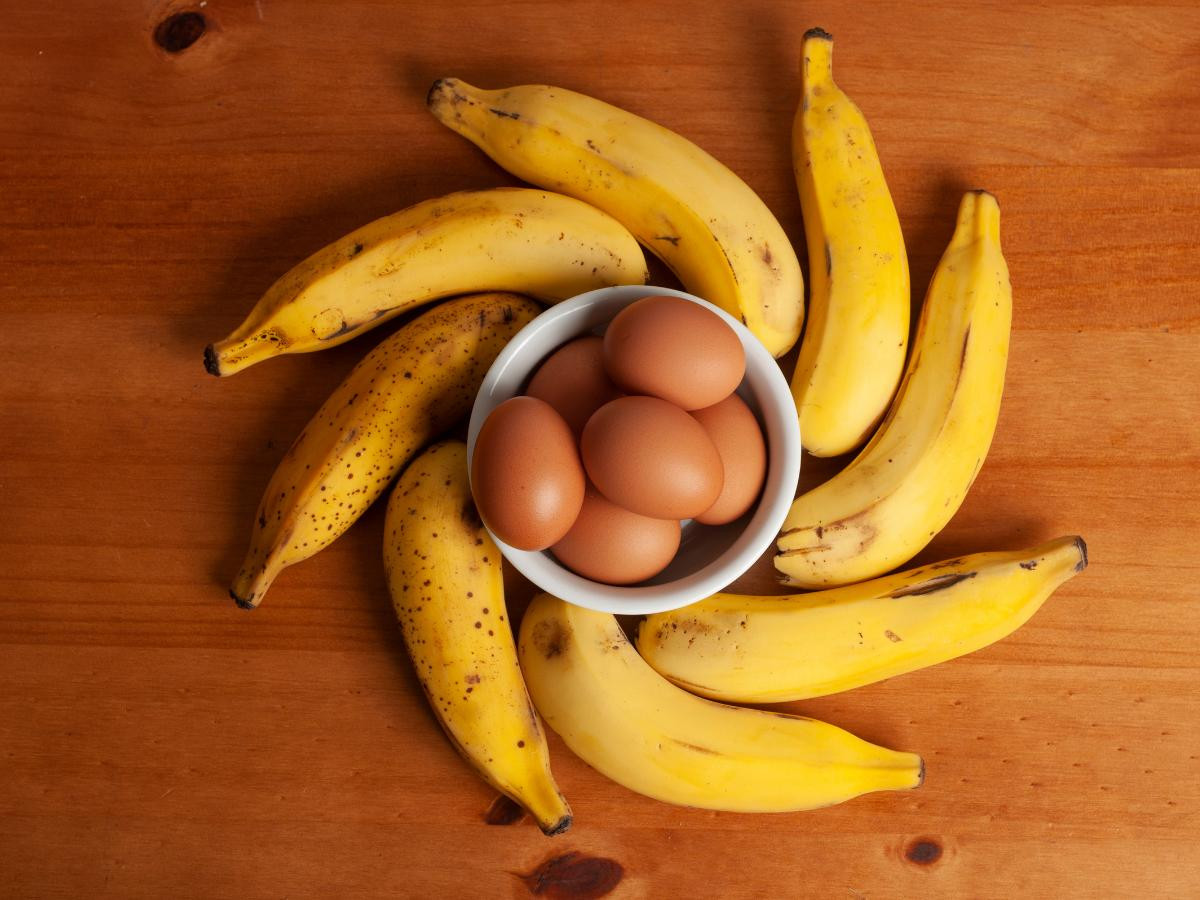
To replace one egg with a mashed banana in a baking recipe, you generally use about one-quarter cup (approximately 60 milliliters) of mashed banana. Here’s a simple guideline:
1. Mash the Banana: Choose a ripe banana for the best flavor and texture. Overripe bananas, which are softer and sweeter, are ideal for this purpose.
2. Measure the Amount: Measure out about one-quarter cup after mashing the banana. This quantity is typically equivalent to what one egg would contribute in terms of moisture to the recipe.
3. Mix into Your Batter: Add the mashed banana to your batter like the egg. Blend it well with the other ingredients.
Points to Consider:
– Texture and Flavor: Keep in mind that bananas will add a slight banana flavor and can make the baked goods denser and moister than eggs.
This substitution works best in recipes with complementary banana flavors, like pancakes, muffins, or banana bread.
– Leavening Adjustment: Since bananas don’t have the leavening properties of eggs, slightly increase the amount of baking powder or baking soda in the recipe to ensure proper rise.
– Sugar Adjustment: If the bananas are very sweet, you may want to reduce the sugar in the recipe accordingly.
– Vegan and Allergy Considerations: This substitution is great for vegan recipes or those with egg allergies. However, it’s important to ensure that the other ingredients in the recipe meet these dietary needs.
Using bananas as an egg substitute is a healthy and easy way to make your baking recipes more plant-based and add unique flavor and texture to your baked goods.

